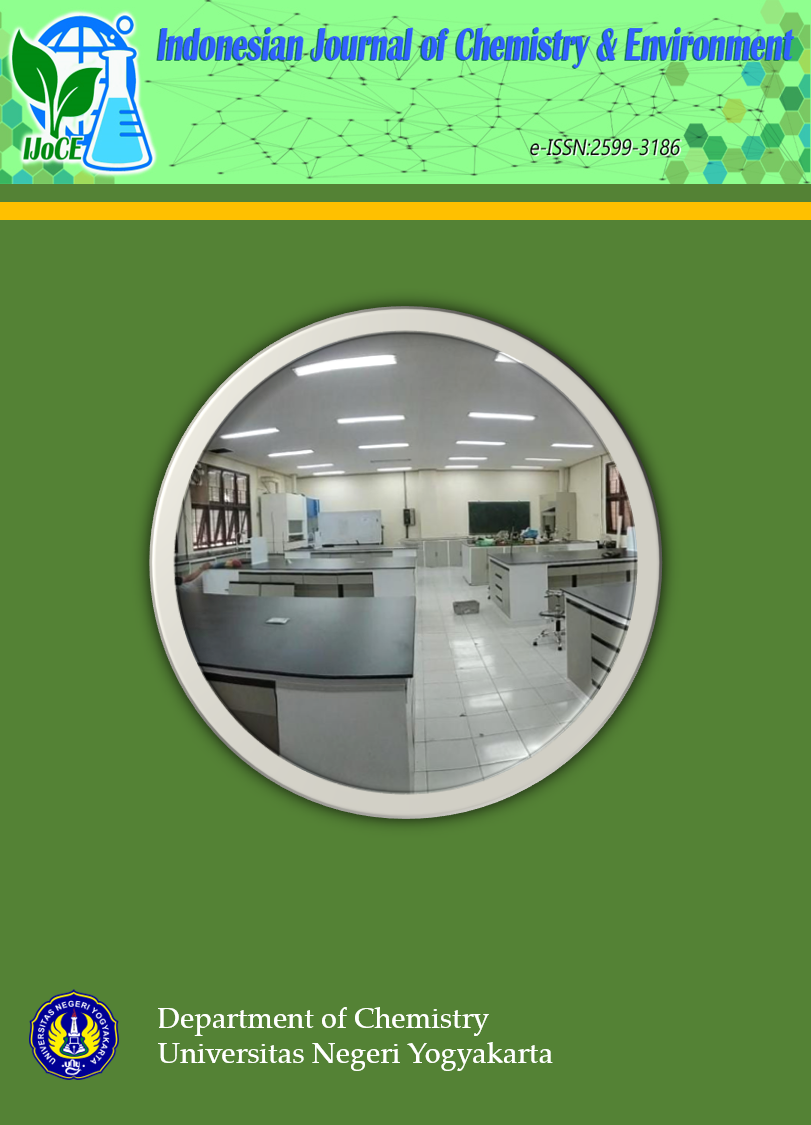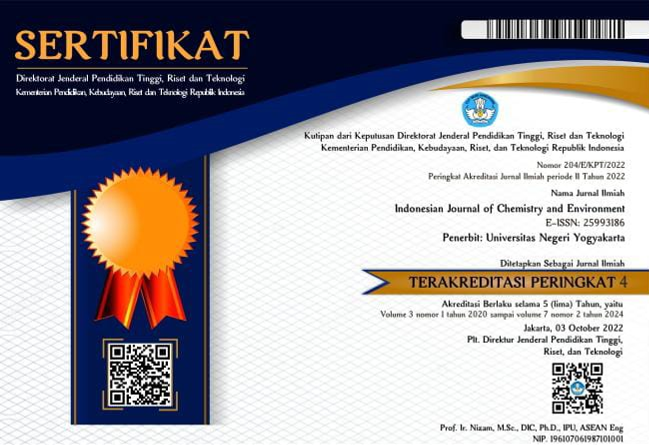Synthesis of Vanillyl Acetate Through Fischer Esterification of Acetic Acid and Vanillyl Alcohol Product of Vanillyl Reduction
DOI:
https://doi.org/10.21831/ijoce.v5i2.54577Abstract
The aims of this research are (1) synthesis of vanillyl alcohol compounds using sodium borohydride (NaBH4) and synthesis of vanillyl acetate compounds through Fischer esterification reaction between acetic acid and vanillyl alcohol from reduced product of vanillin, (2) characterization of vanillyl alcohol compounds and vanillyl acetate compounds using Thin Layer Chromatography (TLC), Fourier transform Infrared (FTIR) and Gas Chromatography Mass Spectroscopy (GS-MS). Vanillyl alcohol was obtained by reducing the aldehyde group of vanillin using sodium borohydride (NaBH4). Through the Fischer esterification reaction between the reduced compound of vanillin and acetic acid using H2SO4 as a catalyst, vanillyl acetate was characterized using TLC, FTIR, and GC-MS. The identification results using TLC showed the appearance of the functional group OH alcohol and CO alcohol in the area of 3442.22 cm-1 and 1153.99 cm-1 on the IR spectrum of vanillyl alcohol. Identification using GC-MS stated that vanillyl alcohol has a purity of 91.13% of 154 m/z value in the yield of 59.74%. The results of the esterification reaction form the brown solids with a yield of 63.98%. Meanwhile, the characterization results using TLC showed that the synthesis of vanillyl acetate has been formed by the appearance of the functional group C=O ester at a wave number of 1738.59 cm-1 and CO ester at 1274,2 cm-1 on the IR spectrum of vanillyl acetate.
Downloads
Published
2022-12-31
How to Cite
[1]
Triwijayanti, C.A. and Budimarwanti, C. 2022. Synthesis of Vanillyl Acetate Through Fischer Esterification of Acetic Acid and Vanillyl Alcohol Product of Vanillyl Reduction. Indonesian Journal of Chemistry and Environment. 5, 2 (Dec. 2022), 51–57. DOI:https://doi.org/10.21831/ijoce.v5i2.54577.
Issue
Section
Articles
Citation Check
License
Authors who publish with this journal agree to the following terms:
- Authors retain copyright under a Creative Commons Attribution–ShareAlike License (CC BY SA) that allows others to share: copy, and redistribute the material in any medium or format, Adapt: remix, transform, and build upon the material, for any purpose, even commercially.
- Authors are able to enter into separate, additional contractual arrangements for the non-exclusive distribution of the journal's published version of the work (e.g., post it to an institutional repository or publish it in a book), with an acknowledgement of its initial publication in this journal.
- Authors are permitted and encouraged to post their work online (e.g., in institutional repositories or on their website) prior to and during the submission process, as it can lead to productive exchanges, as well as earlier and greater citation of published work.










